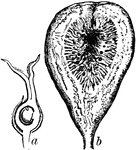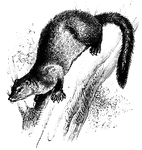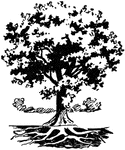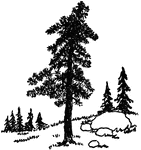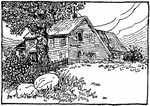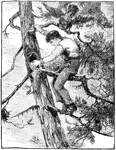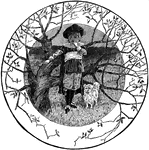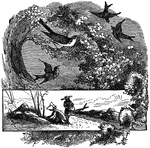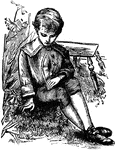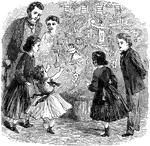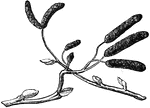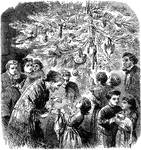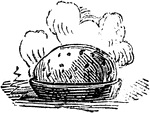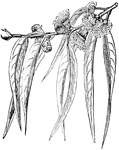
Blue Gum
A flowering branch of the Blue Gum Tree (Eucalyptus globulus), a tree in the Myrtaceae family of evergreen…
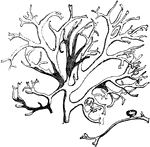
Tree Moss Bearing an Apothecium
The tree moss (Psuedevernia furfuracea) is a fungus that grows on the bark of firs and pines, here showing…
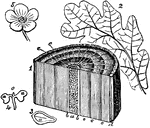
Section of Branch Showing Exogen
"Exogen. 1. Section of a branch of three years' growth: a, medulla or pith; b b, medullary sheath; e…
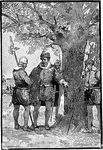
Croatan Carved into Tree at Roanoke
John White finds the only clue to the disappearance of the "Lost Colony" of Roanoke: a tree carved with…
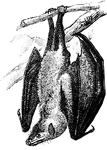
Fruit Bat Hanging from Tree
The image shows a fruit bat, a bat from the Pteropodidae family of megabats.
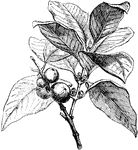
Branch of Gambooge
The Gambooge tree (Garcinia gummi-gutta) is a plant in the Clusiaceae family. The species was also known…
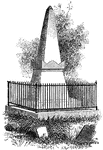
Grave Marker with RIP
An obelisk shaped grave marker with RIP (rest in peace) inscribed on the front. Marker is surrounded…
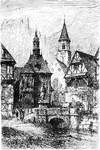
Black Forest Village
View of a village in the Schwartzwald, or Black Forest. The Black Forest stands in the elbow formed…

Palm Tree
Tangrams, invented by the Chinese, are used to develop geometric thinking and spatial sense. Seven figures…

Tree
Tangrams, invented by the Chinese, are used to develop geometric thinking and spatial sense. Seven figures…

Palm Tree
Tangrams, invented by the Chinese, are used to develop geometric thinking and spatial sense. Seven figures…
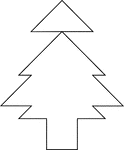
Tree
Tangrams, invented by the Chinese, are used to develop geometric thinking and spatial sense. Seven figures…

Palm Tree
Tangrams, invented by the Chinese, are used to develop geometric thinking and spatial sense. Seven figures…
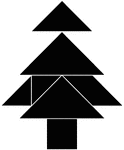
Tree
Tangrams, invented by the Chinese, are used to develop geometric thinking and spatial sense. Seven figures…
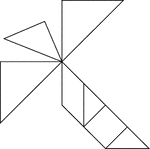
Palm Tree
Tangrams, invented by the Chinese, are used to develop geometric thinking and spatial sense. Seven figures…
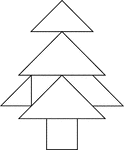
Tree
Tangrams, invented by the Chinese, are used to develop geometric thinking and spatial sense. Seven figures…
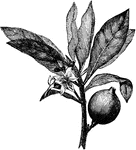
Huito
The Huito (Genipa americana) is a small tree with edible fruit in the madder family, Rubiaceae.

Two Sparrow Hawk in a Large Flat Nest of Twigs with Five Young Sparrow-Hawk Beside a Tree Trunk
"Accipiter nisus, the Sparrow-Hawk, which breeds throughout Europe, North Africa, Asia north of the…
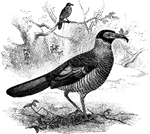
Two Radiated Ground Cuckoo, One with an Insect in its Mouth, the Other in a Tree Branch in a wooded Area
"The plumage is brownish, with white margins to the feathers and a purple tinge on the rufous-mottled…
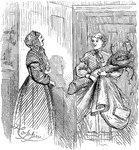
Woman Holding Tree Branch
An illustration of two women standing at a door with one holding a large tree branch.

Cotyledon of a Maple
An illustration of the cotyledon of a maple. A cotyledon is a significant part of the embryo within…
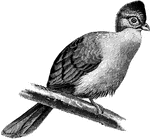
Green-Mantled Turaco Sitting on a Tree Limb
"The Gallirex chlorochlyamys, Green-mantled Turaco, has a general coloration of metallic blue and green…

Leadbeater's Cockatoo Sitting on a Tree Branch
"Cacatuo leadbeateri, Leadbeater's Cockatoo, has a red crest banded with yellow and tipped with white,…

A Kea Sitting a Tree Branch
"Nestor notabilis, the Kea of the south island of New Zealand, has olive-green plumage with blackish…

Racquet-Tailed Kingfisher
"Tanysiptera, the Racquet-tailed Kingfisher or "Paradise Kingfisher", the sexes may be similar or dissimilar,…
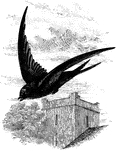
Common Swift Flying Through the Air by a Structure and a Tree with its Mouth Open
"The coloration of the twenty or more species of Cypselus is sooty-black or mouse-brown, frequently…
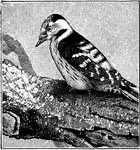
Lesser Spotted Woodpecker
"Dendrocopus minor, or Lesser Spotted Woodpecker, are the British representatives, The colours in this…
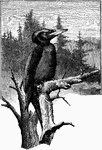
The Great Black Woodpecker
"Picus martius, the Black Woodpecker, an inhabitant of the pine-forests of Europe and Asia to Japan,…
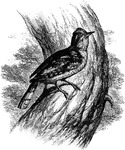
A Wryneck Sitting on a Tree
"Iynx torquilla, the Cuckoo's-mate or Snake-bird, is fairly common in England, and extends thence to…
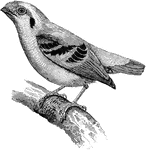
A Broadbill Sitting on a Tree Branch
"The plumage in the Calyptomena viridis of the Indo-Malay countries is bright green, with large black…
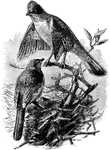
Two Grey "Coly-Shrike" Birds Sitting on Tree Branches
"Hypocolius ampelinus, Grey "Coly-Shrike", the plumage is soft, with characteristically stiff shafts…

Nuthatch
"The colours in Sitta caesia, (Nuthatch) which ranges over nearly all the Palaearctic and Indian Regions,…
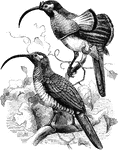
D'Albertis' Bird of Paradise
"Drepanornis albertisi, D'Albertis' Bird of Paradise, is rufous-brown, with green throat and ante-ocular…
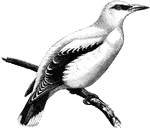
Golden Oriole
"The Golden Oriole, Oriolus galbula, which breeds exceptionally in England, is orange-yellow, with black…
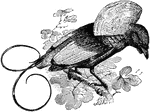
Magnificent Bird of Paradise
"Diphyllodes magnifica, Magnificent Bird of Paradise, has a brown head and under surface, green throat…
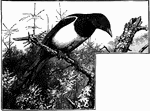
A Magpie Sitting on a Tree Branch Looking Down While Surrounded by Other Trees
"The Pica rustica, or Magpie, extends through the Palaearctic Region, and reaches Formosa and North…
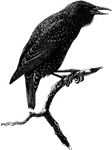
Common Starling
"Our familiar Starling (Sturnus vulgaris) being iridescent black, with buff markings above, and, after…

